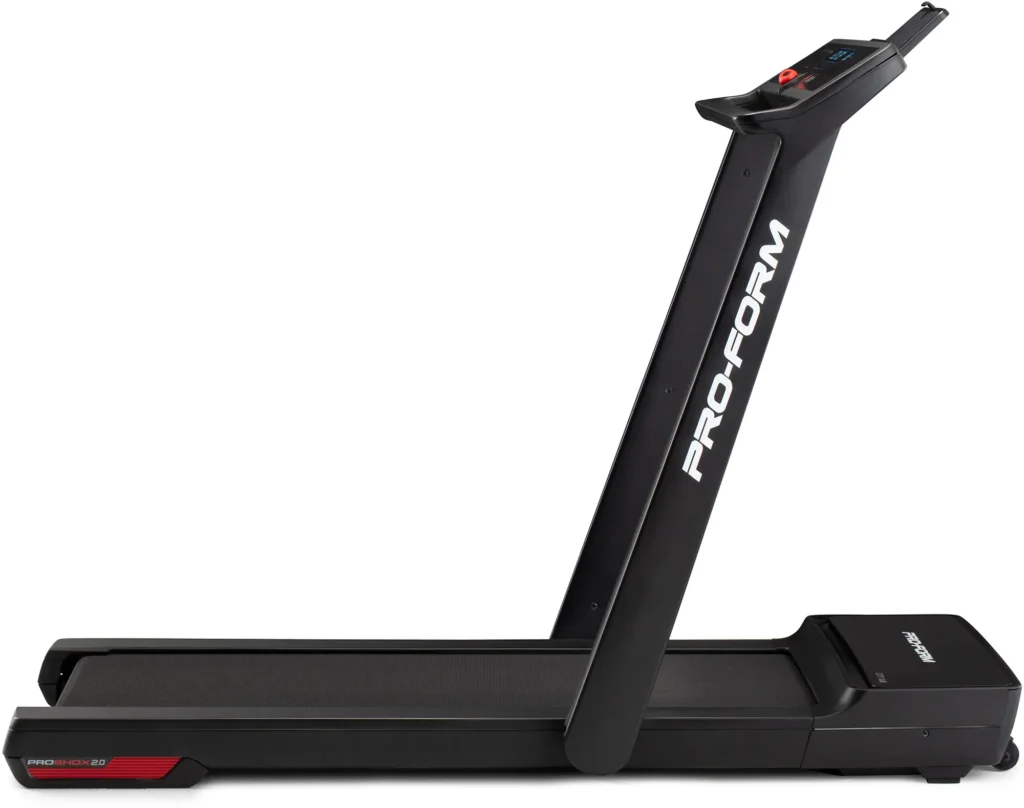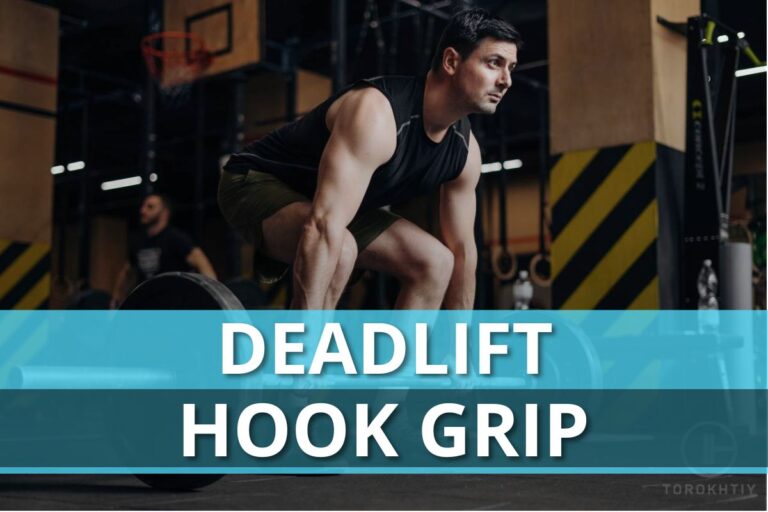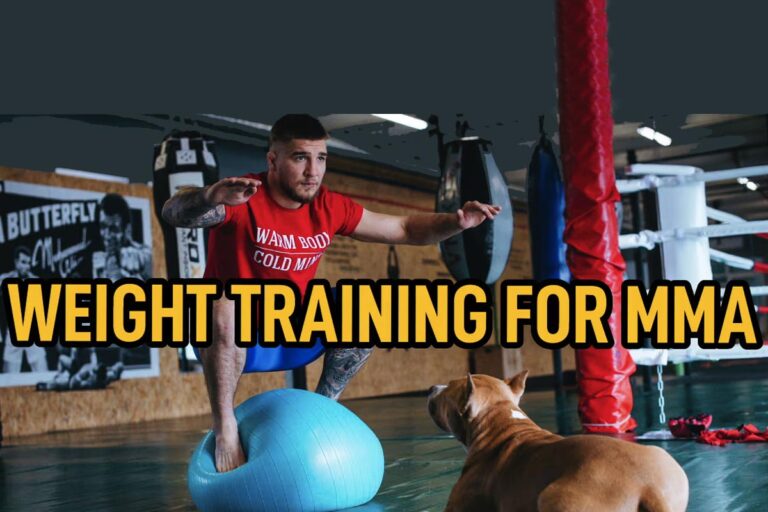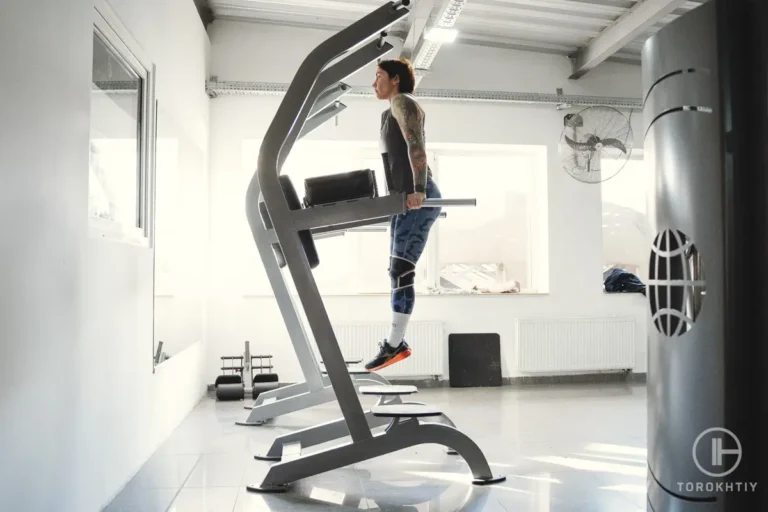How To Run On A Treadmill? Everything You Need To Know
Reviewed by: Oleksiy Torokhtiy (21 years of Oly Lifting experience)
Whether you’re a professional runner or a weekend warrior, chances are you’ve taken treadmill strolls and sprints in the gym. This over-the-counter calorie buster may sometimes be intimidating due to a limited surface, fear of falling, and boring routines.
In this step-by-step guide, we’ll talk about how to run on a treadmill, including basics, tips, and recommendations. So, let’s get into the stride!
How to run on a treadmill? It’s simple and straightforward. Take care of your posture. Then, ramp up the pace over time. Treadmill running tips start with getting accustomed to treadmill settings, using interval training methods, and tracking the progress.
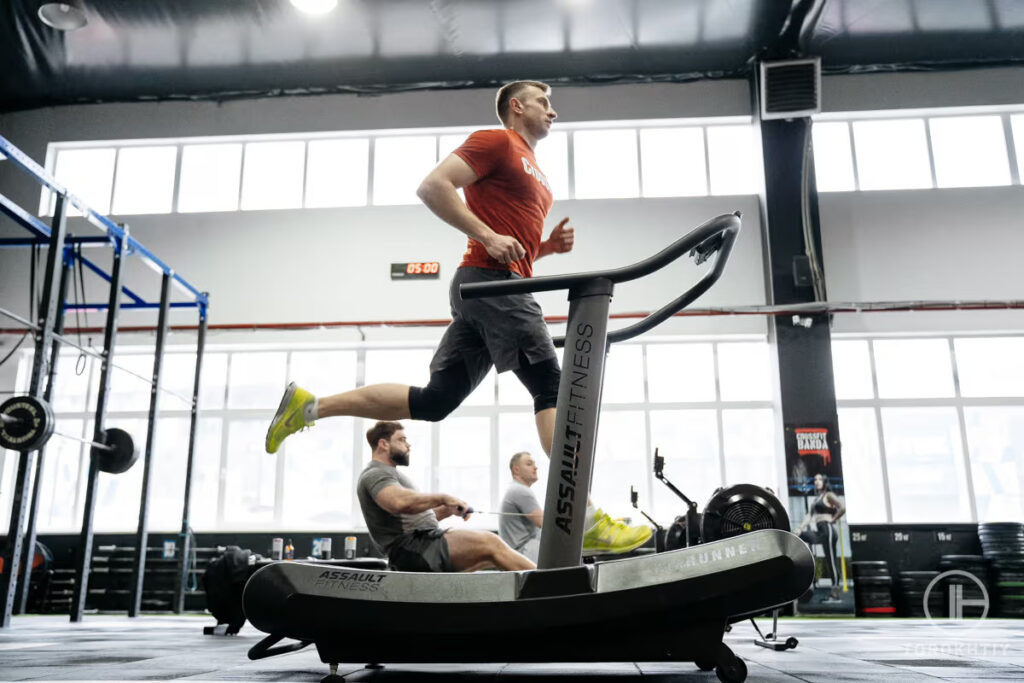
What Is a Treadmill?
A treadmill is a popular cardiometabolic solution that allows you to walk, jog, and run at a controlled pace and environment. It does so by feeding a belt under your feet. You can get a motorized or manual type, although the former is more common and portable. It gives you total control of training intensity, including speed, incline, and other ramp settings.
Treadmills have a pair of handles at the elbow height. You can hold them for support and balance when needed. Higher-end versions have swapped consoles for HD touchscreens with multiple streaming options to kill monotony. However, tech features should be secondary to safety and performance functionalities in order to squeeze out the maximum value.
You might be thinking, what does running on a treadmill do?
First, it’s a powerful cardio machine, as clarified under the calorie burn chart by Harvard Health. In fact, it enables the most optimal energy expenditure among all indoor counterparts. You get to work up a lot of lower-body muscles. Deck cushioning makes it low-impact and joint-friendly compared to hitting the road.
Moreover, treadmill training improves physical fitness and body composition. It can aid in correcting gait, posture, and balance problems. Not to mention the immense flexibility and freedom in your workouts.
| Speed (mph) | Time (minutes per mile) | Average Calories Burned/30 minutes (depending on your body weight) |
|---|---|---|
| 5 | 12 | 240-336 |
| 6 | 10 | 295-420 |
| 7.5 | 8 | 375-525 |
| 10 | 6 | 451-671 |
How Should A Beginner Run On A Treadmill?
Master the use of a treadmill instead of waiting out the blizzard. And possibly, you’ll stick to it well past the spring. It is beneficial for all age groups and skill levels. Here is a blueprint for beginners!
1. Know Your Equipment
The placement and range of settings vary with the make and model. If you’re in a gym, get the hold of a trainer. At home, the accompanying instruction manual will walk you through all features. Some of the most ubiquitous functions are as follows.
- The speed display will read the belt’s current velocity in either miles or kilometers. Most treadmills top out at 8-12 mph. There is an apparent button with a runner on it. You’ll find plus and minus signs to upgrade and downgrade the speed, respectively.
- Other useful stats on the monitor are incline (gradient), calories (kcal), and heart rate (bpm). Remember, the calorie counter isn’t always accurate because the energy expenditure depends on age, weight, sex, and other factors!
- Quick-access buttons flank the display panel, letting you jump to a particular number. For example, it would take nine taps to get to 10 mph unless you have a direct-access switch. Some manufacturers compensate by adding controls on handrails too.
- Presets and intervals are pre-programmed mixtures of speed and incline to shake up your workouts. They are often categorized as cardio, strength, marathon, uphill, etc. Set and forget – the settings would change independently.
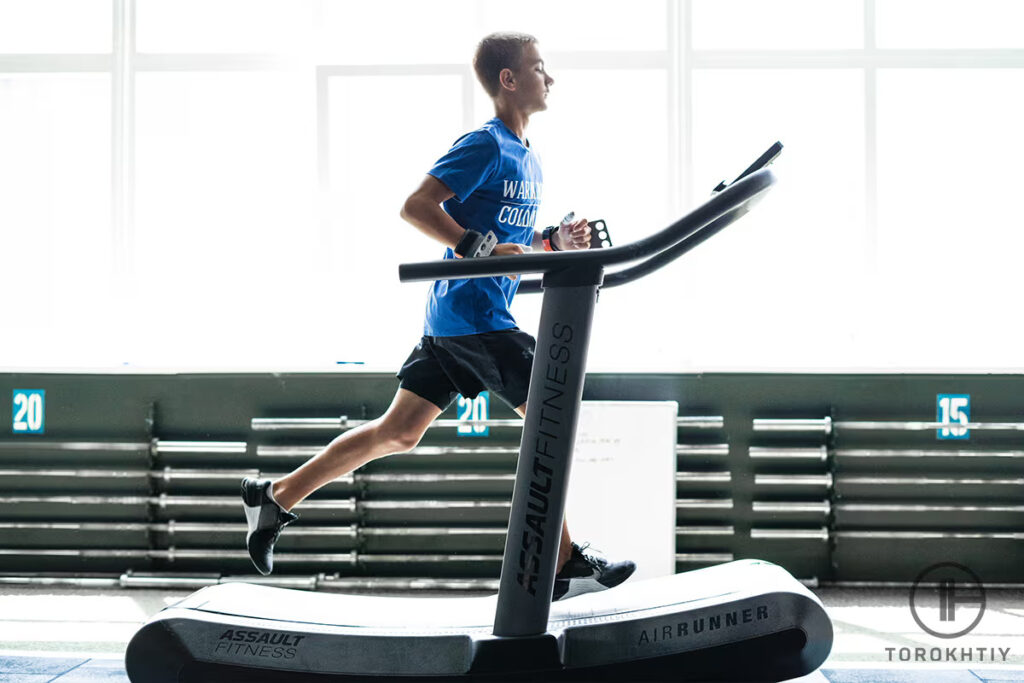
2. Warm Up And Cool Down
How to start running on a treadmill? Slow and steady! It’s tempting to hop on and go all out. However, your muscles need pre-stretch and blood supply to accommodate vigorous exercises. Similarly, the pulse also favors a gradual increment. Slowly phase out the fast pace before getting off the platform.
The American Heart Association calls warming up and cooling down quintessential for your exercise performance and heart. These 5-10 minute light bouts look after muscle strength, recovery, and stiffness.
3. Put On The Incline
Cranking up the incline isn’t an advanced feat. It’s expressed in percentages. The highest ends up at 12% or 15%. Dial in one or two grades early on to better simulate outdoor conditions since there is no air resistance. Once you have built enough endurance and confidence, go for higher inclines.
In case you’re wondering about the benefits of this bolstered challenge, it significantly improves VO2max consumption and running economy compared to running on a flat surface. You’ll therefore burn more calories in shorter periods. It also recruits more of the hamstrings and glutes besides the quads.
Alternate incline sprints with flat surfaces to bundle up stamina and strength in equal measures. Prolonged running on extremely steep inclines may expose you to injuries. After all, where would you find a 15% incline over a five-mile stretch in the real world?
4. Tie In The Safety Rope
All treadmills have an emergency stop that instantly halts the rotating belt. You’ll see a key and clip-on lanyard attached to it. The motor wouldn’t start without the input. Fasten this safety clip to your shirt so the machine stops as soon as you tumble or slip.
You also want to ensure the key won’t eject accidentally. The instant halt when you’re keeping up the pace is no less dangerous. Play with the emergency button without getting on board to vet the response and give.
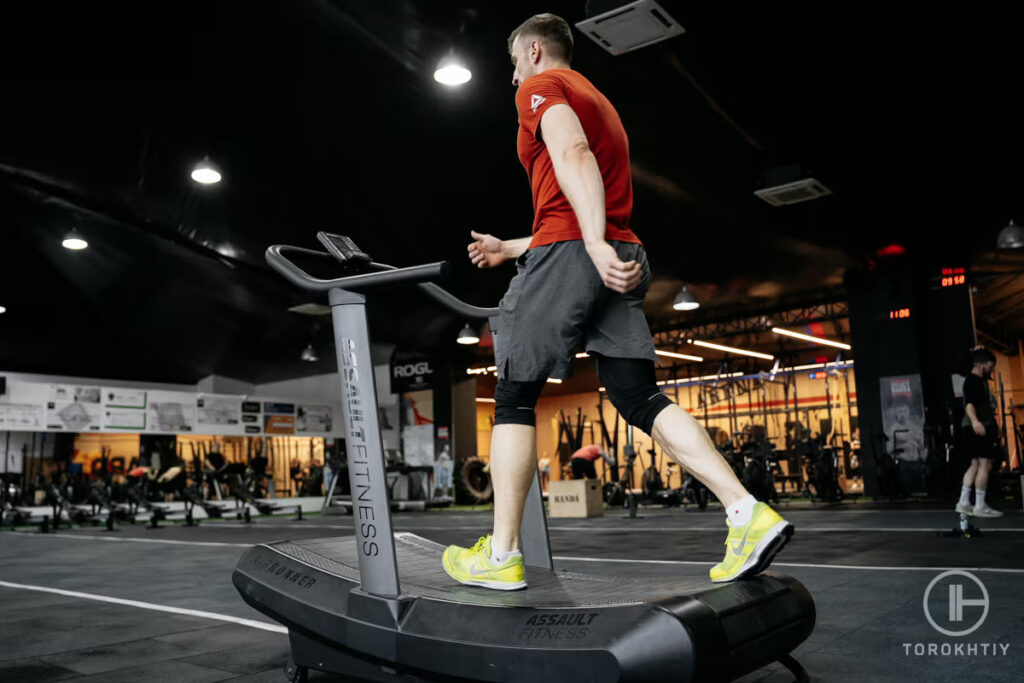
5. Measure And Compare Results
A few treadmills come with a memory and user profile component. So, everybody can log into their profile and check out past activities. If this optionality isn’t built in, compatible apps must provide the data.
It helps in tracking progress, establishing goals, and evaluating results. Something you can’t do out in nature! Another unique training advantage is dictated terrain and topography. You can convert plains to hilly areas, and vice versa, on the fly.
Tips From the Champ
The ProForm City L6 is a compact and affordable treadmill designed for home use. It utilizes ProForm’s original ProShox™ cushioning to reduce joint impact, resulting in a noticeably more comfortable workout experience. With precision-balanced non-flex rollers, the belt operates smoothly and quietly.
Olympic Weightlifting Champion
5 Effective Tips For Running On A Treadmill
Running and running with a proper form are two different concepts. Here, we’ll discuss the optimal posture requirements and general mistakes people tend to overlook. This is how to run properly on a treadmill.
1. Stand Tall
Don’t hunch and collapse your shoulders. Keep hips forward, feet in line, and pelvis upright. It gets tricky and more important as you walk up the incline and try to disengage your glutes. Keep your butts, core, and entire upper body active throughout the movement. Lower the length or intensity of your workout if you have to, but don’t compromise the posture.
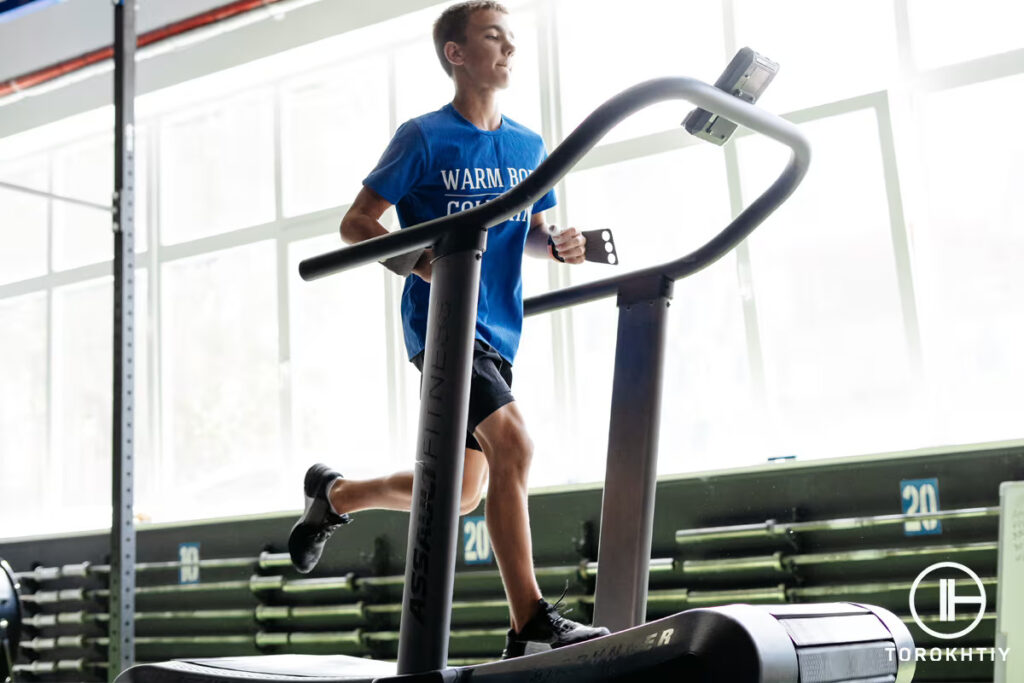
2. Swing Arms
Crowding the console and keep holding handles are grand errors. Your primary aim is to move rhythmically and naturally. Beginners have this fear of falling off the back, so they run super close to the console, shortening the stride. Also, your arms are supposed to be swinging freely and relaxed. Maintaining a 90-degree elbow angle isn’t necessary. The point is not to criss-cross your arms.
3. Look Up
Keep in mind; you have to run tall and proud. Looking down sacrifices the whole purpose. You might be seeing those numbers hike or watching out feet out of interest or fear – it doesn’t matter! Dropping the chin, leaning shoulders, and driving your hips out make up an inaccurate form. If you start feeling stiff, shake your shoulders and continue to relax.
4. Land Midfoot
Keep the stride quick and natural. Neither overstriding nor chopping off excessively! Research shows that treadmill running can affect your foot strike patterns and gait biomechanics. It’s because people fail to adjust to a limited surface. You can remedy this by landing close to the ball of your feet instead of heels. Use the back leg to propel forward.
5. Jazz Up
You can take several steps to prevent every minute from feeling like an eternity. Choose preset programs, visualize a route, or watch a TV show. Better yet, put on your headphones and turn up the bass. Some treadmills come with Bluetooth speakers and aux cables. Music motivates you to sync with the beat, elongating time-to-exhaustion and aerobic consumption.
A Treadmill We Recommend
The entry-level ProForm City L6 carries the rich tradition of NordicTrack treadmills. It has a speed range of 0-8 mph with a 1.6 hp motor, no incline, and a 250 lb weight capacity. ProShox cushioning effectively absorbs shocks and sounds. The running surface is 45” in length, adequate for most runners. Ergonomic handlebars lay flat along with its high-contrast display panel for easy storage. A media ledge allows you to prop up your device.
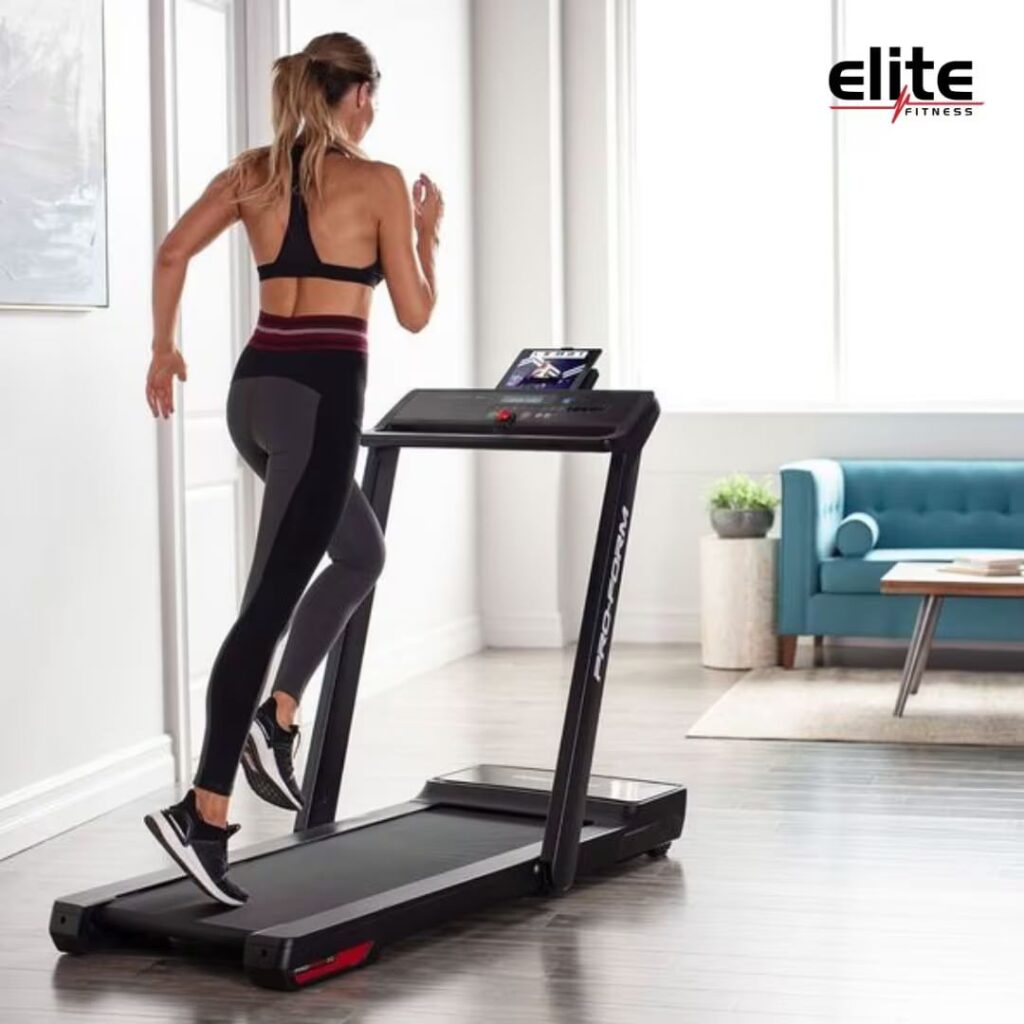
The best part about City L6 is the full iFit support. Trainers can virtually adjust different settings. You can explore the world’s biggest digital library and on-demand classes for the first month, free of cost. Once the trial is about to end, you can continue or unsubscribe from the service. The budget-segment treadmill has a 10-year commercial-grade warranty. It’s lightweight and portable. No assembly is required whatsoever!
You’ll be hard-pressed to find a better interactive option available for amateur and casual runners in this price range.
FAQ
Is It OK To Just Run On The Treadmill?
Sure! Treadmill training can prove efficient for your fitness goal, be it losing weight, improving cardiovascular health, or strengthening leg muscles. The best way to run on a treadmill is to rely on an interval race formula with acclimatizing warm-up and cool-down sessions.
Is 30 Minutes Of Running On The Treadmill Enough?
Running for about half an hour on a treadmill can torch between 300 to 600 calories, ultimately hinging on workout intensity and individual factors. If you do it for five days a week, you’ll complete 150 minutes of the minimum physical activity guideline as well.
What Speed Should I Run On A Treadmill?
For warm-ups and rest periods, jog slowly at less than 5 mph. Using Fitbit and Starva, the average speed has been determined to be 6 mph, including all genders, ages, and non-runners. Professional trainees clock in at 9.5. Usain Bolt, the fastest man alive, has crossed the 27 mph barrier.
Conclusion
A treadmill is a very helpful piece of fitness equipment. Whether you’re thinking of starting cardio or have cornered into the home due to weather conditions, buying a treadmill will never disappoint. It gives you a safe and compliant environment to hone your running mechanics and endurance.
If you ask how to run on a treadmill in an elevator, we’ll summarize all treadmill running tips in one line! Step back, start slow, straighten up, see forward, and get your athletic juices flowing.
Also read:
- Treadmill Manual vs Electric
- Treadmill vs Recumbent Bike
- Slat Treadmill vs Belt
- How Does a Treadmill Work
- Best Proform Treadmill
- Best Treadmill for Bad Knees
- Benefits of Using the Treadmill
- Average Cost of a Treadmill
References:
- Calories burned in 30 minutes for people of three different weights // Harvard Medicine School: https://www.health.harvard.edu/diet-and-weight-loss/calories-burned-in-30-minutes-for-people-of-three-different-weights
- Energy expenditure with indoor exercise machines // NCBI: https://pubmed.ncbi.nlm.nih.gov/8618368/
- Effects of six weeks outdoor versus treadmill running on physical fitness and body composition in recreationally active young males: a pilot study // NCBI: https://www.ncbi.nlm.nih.gov/pmc/articles/PMC9338755/
- Effectiveness of Treadmill Training on Balance Control in Elderly People // NCBI: https://www.ncbi.nlm.nih.gov/pmc/articles/PMC4242992/
- Warm Up, Cool Down // Heart: https://www.heart.org/en/healthy-living/fitness/fitness-basics/warm-up-cool-down
- The effects of incline and level-grade high-intensity interval treadmill training on running economy and muscle power in well-trained distance runners // NCBI: https://pubmed.ncbi.nlm.nih.gov/24172721/
- Is Motorized Treadmill Running Biomechanically Comparable to Overground Running? // NCBI: https://www.ncbi.nlm.nih.gov/pmc/articles/PMC7069922/
- Effects of synchronous music on treadmill running among elite triathletes // ResearchGate: https://www.researchgate.net/publication/51534935
- How much physical activity do adults need? // CDC: https://www.cdc.gov/physicalactivity/basics/adults/index.htm
- What is the Average Human Running Speed (and How to Improve Yours) // Proud To Run: https://proudtorun.org/average-human-running-speed/
- Usain Bolt // Wikipedia: https://en.m.wikipedia.org/wiki/Usain_Bolt
Why Trust Us?
With over 20 years in Olympic Weightlifting, our team does its best to provide the audience with ultimate support and meet the needs and requirements of advanced athletes and professional lifters, as well as people who strive to open new opportunities and develop their physical capabilities with us.
By trusting the recommendations of our certified experts in coaching, nutrition, dietology, and sports training programming, as well as scientific consultants, and physiotherapists, we provide you with thorough, well-considered, and scientifically proven content. All the information given in the articles concerning workout programming, separate exercises, and athletic performance, in general, is based on verified data. We ensure that you can rely on our professionals’ pieces of advice and recommendations that can be treated as personalized ones which will benefit you and fully meet your needs.
The product testing process is described in more detail here
Author: Ihor Shymechko
Pro Olympic Weightlifter, Coach
Best Results: Snatch – 208 kg,
C&J – 240 kg
Ihor has been a professional weightlifter since 1996, boasting over two decades of competition experience. His notable achievements include clinching the European Championship in 2009 and securing a silver medal in the 105kg division at the Senior World Championships in 2011. Ihor represented his country in the 2008, 2012, and 2016 Summer Olympics. After retiring from competitive weightlifting, he transitioned to coaching, leveraging his vast experience to guide athletes who now compete on both national and international stages.
Reviewed by: Oleksiy Torokhtiy
Olympic Weightlifting Champion
Best Results: Snatch – 200 kg,
C&J – 240 kg
Oleksiy Torokhtiy is a professional athlete boasting 20 years of experience in Olympic weightlifting. With multiple European and World titles under his belt, he has showcased his prowess in two Olympic Games (Beijing 2008 and London 2012). Upon concluding his illustrious career, Oleksiy dedicated himself to coaching. By 2022, he had conducted over 200 weightlifting seminars worldwide. He is the visionary behind an international sportswear and accessories brand known for its motto, “Warm Body Cold Mind.” Additionally, he is an esteemed author and the creator of a series of training programs and eBooks.


